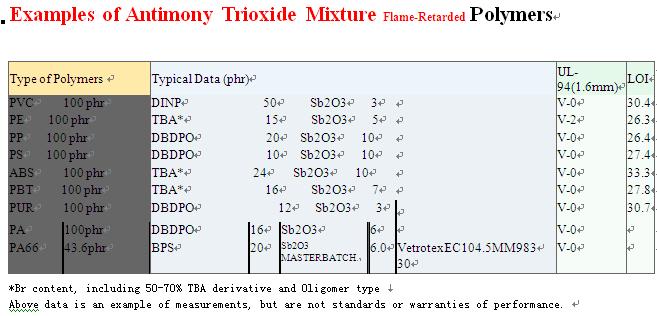Antimony is an element with an interesting history and properties. For a long time people have been using that wide enough. The element is required at both: technical field and culture development.
According to historians the first production of antimony was found at Ancient East 5 thousand years ago.
History of Antimony
Besides gold, mercury, copper and other six elements, antimony is considered like a prehistoric element. Unfortunately the name of antimony discoverer is unknown. But is well known vessels were made of antimony in Babylon 3000 years B.C. Latin name of the element «stibium» occurs at works of Pliniy Sr. It descends from Greek «στιβι». Originally it denoted not an antimony metal but prolate mineral of antimony glance.
In ancient Europe people knew only antimony glance and start producing antimony regulus which was considered as semimetal. According to the Middle Ages prominent scientist at metal manufacturing Agricola: "When the certain portion of antimony is alloyed with the lead it results in the type alloy. It's used by book printers." Thus the element №51 is applied in printing for ages.
For the first time methods of antimony refining and antimony properties, antimony compounds and alloys were described at a famous book «Triumphal car of Antimony» in 1604. The author referred needle antimony to as "Antimony". It was descended from the Greek "ανεμον" – flower (as needle antimony crystals look like a composite flower).
The name "ANTIMONY" defined only this mineral very long time in Russia and overseas. Antimony metal was defined as regulus antimony (regulus antimoni). In 1789 Louvuosier included antimony at the list of elementary substances and called it "antimonie". Now this name remains in French language as the name of the element № 51. English and German names of this element are also similar - Antimony, Antimon.
But there is another version. According to that version the Superior of the abbey in Schtalgausen drew his attention to a very good state of health of the pigs, which licked "dark substance with metallic lustre" and decided to mix that into the monks meal. Forty monks died in the throes.
Since that the substance got the name "antimonium", i.e. substance "anti" "monks" (in full see "Life stone" by Y. Gashek).
Russian name of the element "sur'ma" descends from Turkish "s'urme", translated as "rubbing" or "darkening" of brows. Till 19th century the expression "eyebrows darkening" existed, though it was made with antimony compounds not always. The only antimony compound was used as eyebrow-dye – black modification of trisulfide antimony. So that first it was denoted by the word, which became the Russian name of element № 51.
What is it for?
Antimony metal is used very seldom because of its shortness. But metallurgists often add antimony into alloys as it strengthens solidity of other metals (tin, lead) and doesn't oxidize in usual environment. The number of alloys containing antimony is near to 200. The most famous antimony alloys are antimony lead, type metal, bearing metal.
Bearing metals are alloys with tin, lead and copper, sometimes with zinc and bismuth.
This alloys are comparatively fustible and used in bearing brasses production by casting. The most common-used alloys of this group are babbits containing 4-15 % of antimony.
Babbits are used in machine-tool construction, railway transport, motor transport. Bearing metals have considerable strength, fatigue resistance, corrosion resistance.
Antimony is the one of a number of metals that dilate when consolidating. Because of that type metal (alloy containing lead (82%), tin (3%) and antimony (15%) casting very well in moulds to produce prints; prints made of this alloy let to reach clear imprints.
Antimony increases strength and percussion stability.
Lead alloyed with antimony (5 – 15%) is called antimony lead. 1% addition of antimony increases lead strength substantially. Antimony lead is used in chemical engineering, corrosive liquid pipes production, electric, telegraph, telephone cables sheathing production, electrodes and lead-acid battery grids production. Lead-acid secondary batteries are the largest metallurgical market for the element №54. Also antimony is used in lead alloy shot and ammunition.
Antimony compounds are also applied widely in engineering. Antimony trisulphide is used in matches and fireworks production. Most of antimony materials are made of antimony trisulphide. Antimony pentasulphide is used in vulcanization of rubber. Red medical rubber containing antimony pentasulphide is very flexible. Heat resistant antimony trioxide is used in flame retardant paints, construction materials, textiles, conveyor belts, enamels.
High-purity antimony metal is used in the production of intermetallic compound semiconductor materials such as indium antimonide, aluminium antimonide and gallium antimonide. Antimony is used as a doping agent for one of the most important semiconductors – germanium.
Hydrated potassium antimonyl tartar, known as tartar emetic, is used in medicines for the treatment of stomach ailments. The chemical, together with the less toxic organic antimonides – ethylstibamine, sodium antimonyl gluconate (Pentostam) and N-methylglucamine antimonate (Glucantime) – have been used to treat leishmaniasis, a disease transmitted by sandflies.
A lot of antimony compounds are used as pigments in pants production.
So antimony is one of the oldest metal known on the one hand and a very required one n the other.








0 comment:
Post a Comment